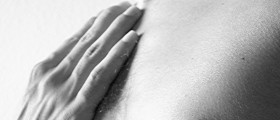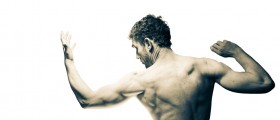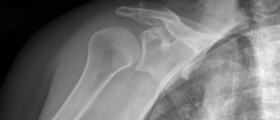Winged Scapula - Overview
Winging scapula is a sort of shoulder injury in which the scapula sticks out at the back. This 'sticking out' of the scapula is particularly visible if one lifts his/her arm up or tries to push against the wall. Patients usually complain about the pressure in the affected bone from the back while sitting on the chair. The symptoms of this condition are noticeable winging of the scapula, pain in the affected bone, limited shoulder elevation, and difficulty while lifting heavy objects.
This condition is connected with the damage or a contusion of the long thoracic nerve of the shoulder and consequent weakness of the serratus anterior muscle. Damage or injury of the previously mentioned nerve causes paralysis of the serratus anterior muscle. The muscle cannot control the bone and the scapula elevates. Damage to the nerve is most commonly caused by a contusion or blunt trauma of the shoulder.

It may also affect people lifting heavy objects. Furthermore, the injury occurs due to repetitive throwing, and traction of the neck and in some cases develops as a consequence of a viral infection.
Surgery for Winged Scapula
The surgeon performs several tests and examinations in order to assess the extent of damage to the long thoracic nerve. After that, he plans the treatment which basically consists of physiotherapy and surgery.
The goal of physiotherapy is to re-educate the serratus anterior muscle. This can be achieved only if the damage to the nerve is mild. This treatment lasts approximately 6 to 12 months.
If nerve conduction studies confirm significant damage to the long thoracic nerve the patient undergoes surgery called a long thoracic nerve decompression. The goal of the surgery is to help the affected nerve recover. This is a highly successful procedure with excellent results. The surgery is performed under general anesthesia and includes a small incision line which allows the surgeon to reach for and decompress the affected nerve.
This surgery carries several risks related to anesthesia and infections and in some cases there is a chance of postoperative stiffness/ pain around the shoulder and damage to nerves and blood vessels around the shoulder.
After the surgery patients regularly undergo rehabilitation in a form of physical therapy. They are taught specific exercises which are supposed to be performed on regular bases. After the surgery patients are supposed to wear a sling for a certain period of time. If there are problems related to pain in the operated area patients are usually prescribed painkillers.
- A winged scapula is evident when the vertebral border or inferior angle of the scapula displays unusual prominence. This condition results in a limited range of motion and decreased shoulder strength. Furthermore, patients experience discomfort and cosmetic deformity.
- Primary winged scapula is caused by neurologic injury, detrimental changes in the bone, or anomalies of periscapular soft tissue. Secondary winged scapula manifests due to glenohumeral and subacromial conditions in which correction of these conditions leads to the winged scapula.
- Surgical procedures in the thoracic region such as radical mastectomy, resection of the first rib, and transthoracic sympathectomy can expose the long thoracic nerve and make it susceptible to damage. It was reported that the long thoracic nerve could be damaged in 30% of infraclavicular procedures involving surgical dissection in the axilla.
- Other procedures such as a posterolateral thoracotomy incision for closed heart procedures in infants and children place the long thoracic nerve at risk due to the division of the latissimus dorsi and serratus anterior muscles. After this procedure, the winged scapula was reported in 77% of cases while complications such as thoracic cage deformity and elevation of the shoulder were only reported in 18% and 61% of cases, respectively.
- It is possible for some patients suffering from scapular winging to recover most or all functionality of the shoulder joint. However, if left untreated, several consequences can ensue including adhesive capsulitis, subacromial impingement, and brachial plexus radiculitis.
- The recommended treatment for winged scapula is initially non-surgical, involving conservative measures such as physical therapy. Varied results have been achieved using braces, standard arm slings, and other orthotics. No treatment method has been experimentally confirmed to be favored. However, some propose that non-operative treatment may be the best course of action for patients with minimal symptoms as well as older and more sedentary patients.
- A variety of surgical treatments have been used over the years to rectify scapular winging. These can be put into the broad categories of wire fixation, muscle transfer, and nerve grafts. Wire fixation procedures include scapulopexy without arthrodesis and scapulothoracic arthrodesis. Muscle transfer procedures involve replacing the function of either the serratus anterior or trapezius and include procedures such as the pectoralis major transfer, split pectoralis major transfer, Eden-Lange procedure and the modified Eden-Lange procedure. Nerve graft repairs involve reinnervating muscle or repairing damaged nerves and include procedures such as nerve transfer surgery, nerve grafts, and microneurolysis of the long thoracic nerve.














-Causes,-Symptoms,-Diagnosis,-Treatment_f_280x120.jpg)


Your thoughts on this
Loading...